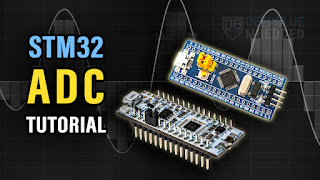How to use FPGA to emulate logic?
Here’s a clean, practical path to use an FPGA as “universal glue logic” (i.e., to emulate gates, decoders, counters, small PLDs, even whole 74xx boards).
1) What “emulating logic” means
You implement a truth-table or state machine in HDL (Verilog/VHDL). The FPGA maps it to LUTs (for combinational logic) and flip-flops/BRAM (for state/ROM). Then you pin-map the FPGA I/Os to your real signals.
2) Minimal workflow (works for Xilinx/Intel/Lattice or Yosys+nextpnr)
-
Sketch the logic (gates, truth table, or state diagram).
-
Write HDL.
-
Simulate (testbench) to prove function.
-
Add pin constraints & I/O standards (usually LVCMOS33).
-
Synthesize → place/route → program the dev board.
-
Probe with a logic analyzer or LEDs; iterate.
3) Hardware cautions (don’t skip)
-
Voltage levels: Most FPGAs are not 5 V-tolerant. Use level shifters or series resistors when interfacing 5 V TTL.
-
Tri-state busses: Inside FPGAs, tri-state becomes multiplexers. Only pads can tri-state with an output-enable.
-
Async inputs: Use two-flip-flop synchronizers and debounce buttons/switches.
-
Clocks/timing: Constrain your clock; don’t rely on “free-running” tools defaults.
4) Tiny building blocks you’ll re-use
(a) 2-FF synchronizer (any async input)
(b) Button debouncer (parameterizable)
5) Example 1: emulate a simple combinational chip (3-input majority / NAND pack)
6) Example 2: emulate a classic 74xx counter (74LS161-style)
-
Features: sync clear, parallel load, enable, ripple-carry.
7) Example 3: ROM/PLA-style logic (e.g., 7-segment decoder)
Use a case (synthesizes to LUTs/BRAM depending on size).
8) Top level: map pins and stitch blocks
9) Pin constraints (template)
-
Xilinx (XDC)
-
Intel (QSF/SDC) and Lattice (LPF/SDC) are similar—assign pins and add
create_clock.
10) Simulate quickly (smoke test)
Write a tiny testbench:
Run in Vivado/Quartus/Radiant—or with Verilator—to verify behavior before touching hardware.
11) Scaling up (replace lots of 74xx)
-
Group related chips into one HDL module per “board section.”
-
Use block RAM for larger ROMs or lookup functions.
-
Replace internal tri-states with muxes + registered enables.
-
Keep a spreadsheet mapping each original 74xx pin to an FPGA pin.
-
If you need exact propagation behavior, model it with registered stages and timing constraints.
12) Debug & bring-up
-
Blink/LEDs for basic life signs; then use the vendor’s Integrated Logic Analyzer (ILA / SignalTap) to probe internal nets.
-
If timing fails, lower clock or pipeline (register between logic levels).
-
For bouncy external lines, confirm the synchronizer + debouncer are in place.
.jpg)



评论
发表评论